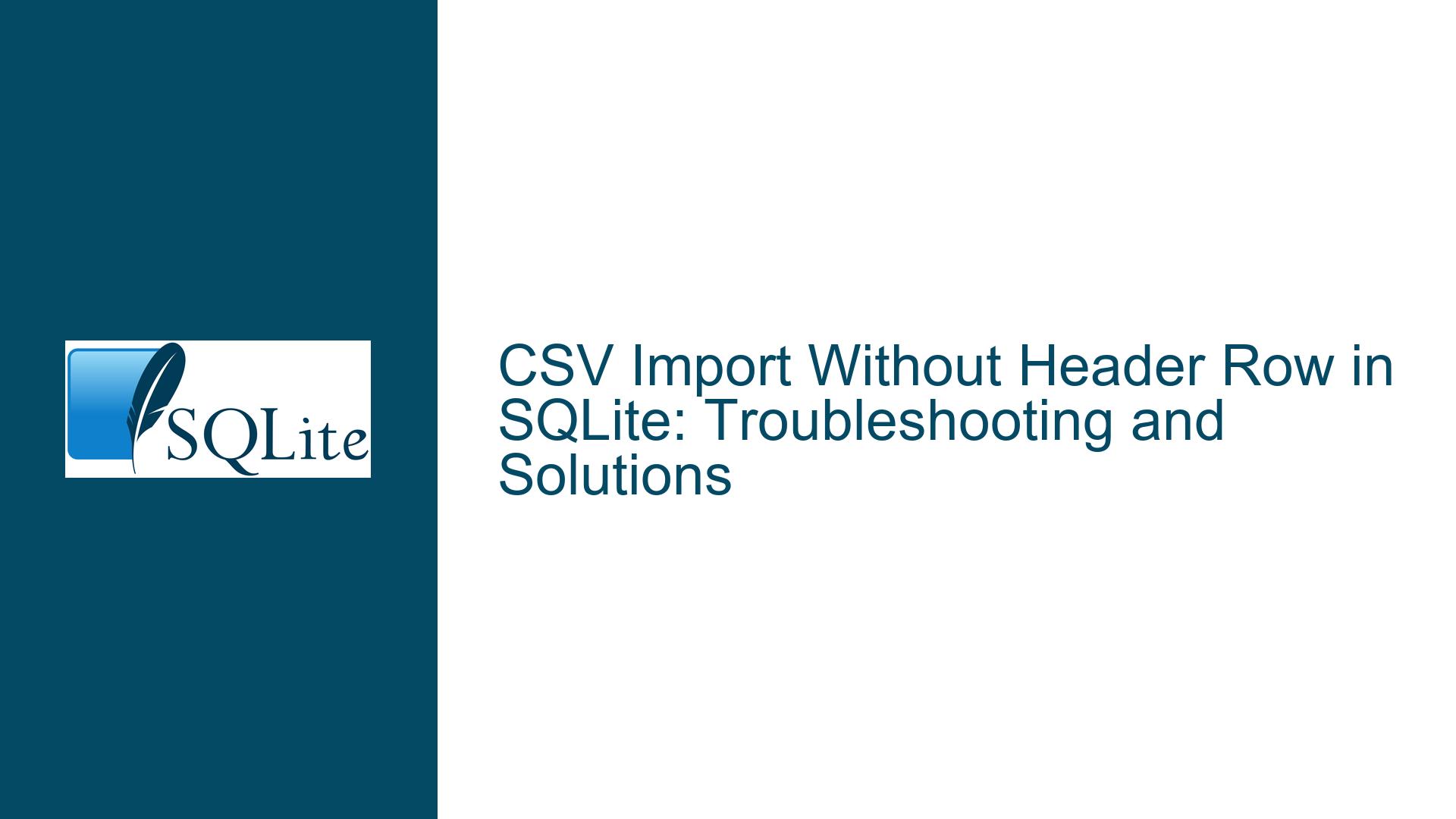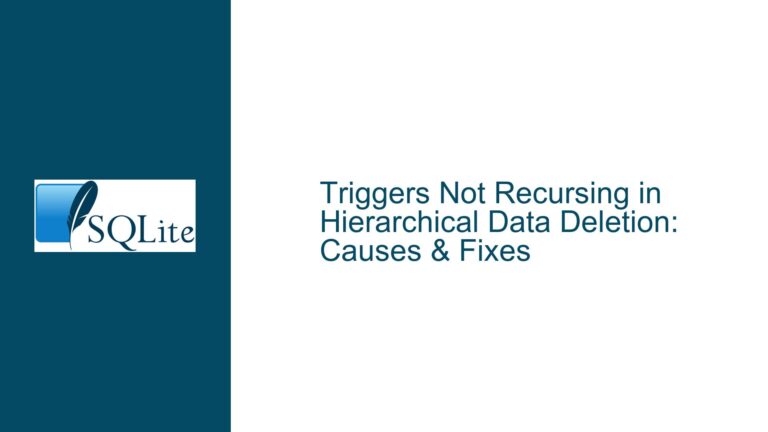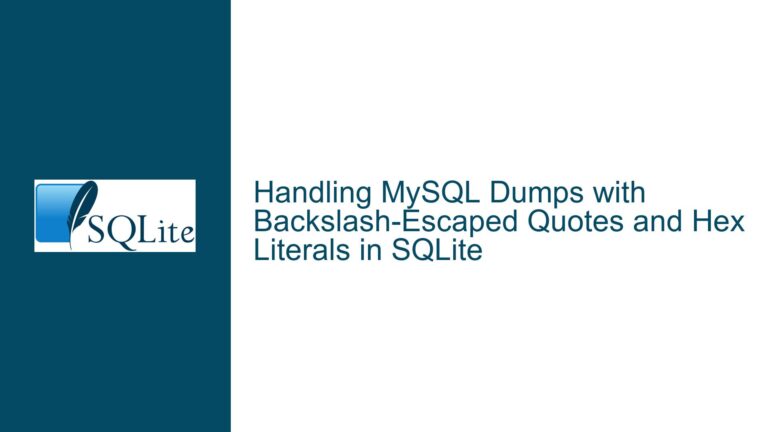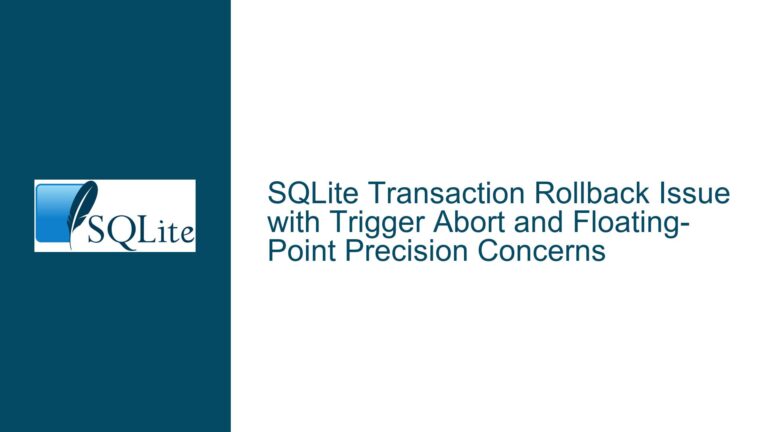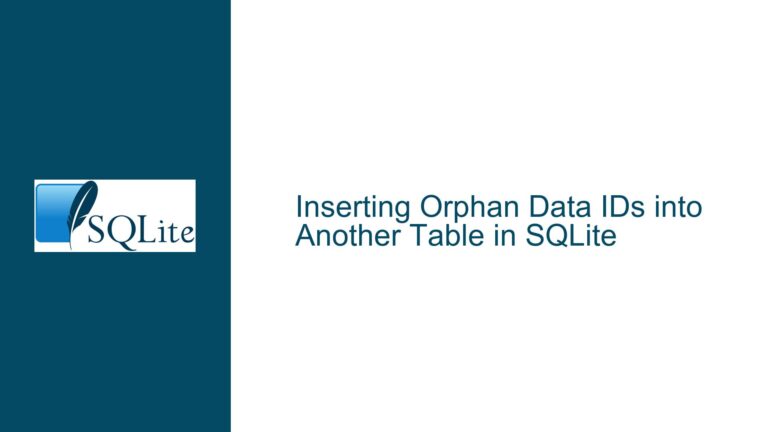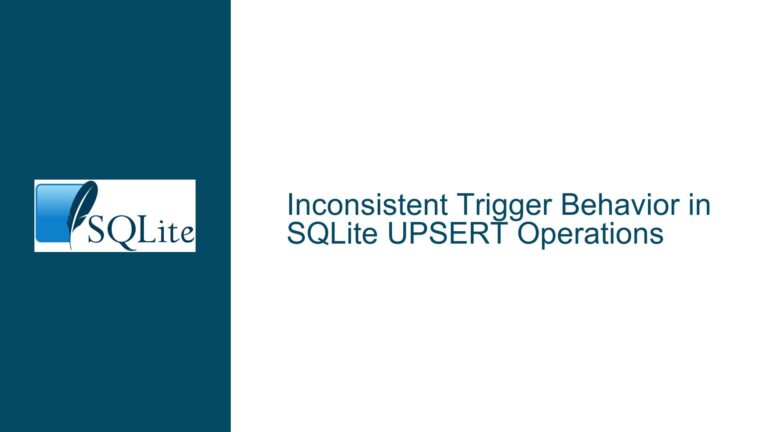CSV Import Without Header Row in SQLite: Troubleshooting and Solutions
CSV Import Header Row Skipping Issue in SQLite CLI
When working with SQLite, importing CSV files is a common task, especially when dealing with data migration or bulk data insertion. However, a frequent issue arises when attempting to import a CSV file without a header row. The SQLite Command Line Interface (CLI) provides an option to skip the header row using the --skip 1 flag, but users often encounter difficulties in making this option work as expected. This issue can stem from a misunderstanding of the CLI commands, improper table creation, or incorrect usage of the .import command.
The core of the problem lies in the interaction between the .import command, the --skip option, and the table schema. When importing a CSV file, SQLite expects the table to be pre-configured with the correct column names and data types. If the table is not created beforehand, or if the .import command is not used correctly, the import process may fail or produce unexpected results. Additionally, the --csv option, which explicitly sets the import mode to CSV, can sometimes be overlooked, leading to further confusion.
Understanding the nuances of these commands and their interactions is crucial for successfully importing CSV files without header rows. This guide will delve into the possible causes of the issue and provide detailed troubleshooting steps to ensure a smooth import process.
Misconfigured Table Schema and Incorrect CLI Command Usage
One of the primary causes of the CSV import issue is a misconfigured table schema. SQLite requires the table to be created with the appropriate column names and data types before importing the CSV file. If the table does not exist or if the column names do not match the data in the CSV file, the import process will fail. For example, if the CSV file contains data for a Pets table with columns name and species, the table must be created with these exact column names and data types before the import.
Another common cause is the incorrect usage of the .import command. The .import command in SQLite CLI is used to import data from a file into a table. However, the command has several options that must be used correctly to achieve the desired result. The --skip option, which is used to skip a specified number of rows (typically the header row), must be used in conjunction with the --csv option to ensure that the file is interpreted as a CSV file. If the --csv option is omitted, SQLite may not recognize the file format correctly, leading to import errors.
Additionally, the .mode command, which sets the output mode for the CLI, can also affect the import process. If the .mode command is set to csv before the import, the --csv option may be redundant. However, if the .mode command is not set to csv, the --csv option becomes necessary to ensure that the file is interpreted correctly. Understanding these interactions is key to resolving the import issue.
Correct Table Creation and Proper CLI Command Execution
To resolve the CSV import issue, it is essential to follow a series of steps that ensure the table is correctly configured and the CLI commands are executed properly. The first step is to create the table with the appropriate column names and data types. For example, if the CSV file contains data for a Pets table with columns name and species, the table should be created using the following SQL command:
CREATE TABLE Pets (name TEXT, species TEXT);
Once the table is created, the next step is to set the CLI mode to CSV using the .mode command. This ensures that the CLI interprets the file correctly during the import process. The following command sets the mode to CSV:
.mode csv
After setting the mode, the .import command can be used to import the CSV file. The --skip 1 option should be used to skip the header row, and the --csv option should be used to ensure that the file is interpreted as a CSV file. The following command imports the pets.csv file into the Pets table, skipping the header row:
.import --csv --skip 1 pets.csv Pets
If the import is successful, the data from the CSV file should be inserted into the Pets table. To verify the import, the SELECT command can be used to retrieve the data from the table:
SELECT * FROM Pets;
This command should return the data from the CSV file, excluding the header row. If the data is not as expected, it may be necessary to revisit the table creation and import steps to ensure that everything was done correctly.
In some cases, it may be helpful to use the .schema command to verify the table structure before importing the data. The .schema command displays the SQL statement used to create the table, which can be useful for ensuring that the table is configured correctly. The following command displays the schema for the Pets table:
.schema Pets
By following these steps, users can ensure that the CSV file is imported correctly without the header row. It is also important to note that the .import command is sensitive to the order of the options. The --csv option should be specified before the --skip option to ensure that the file is interpreted correctly. Additionally, the .mode command should be set to csv before the import to avoid any potential issues with file interpretation.
In conclusion, the CSV import issue in SQLite CLI can be resolved by ensuring that the table is correctly configured and the CLI commands are executed properly. By following the steps outlined in this guide, users can successfully import CSV files without header rows and avoid common pitfalls that lead to import errors. Understanding the interactions between the .import, .mode, and --skip options is key to achieving a smooth import process.
